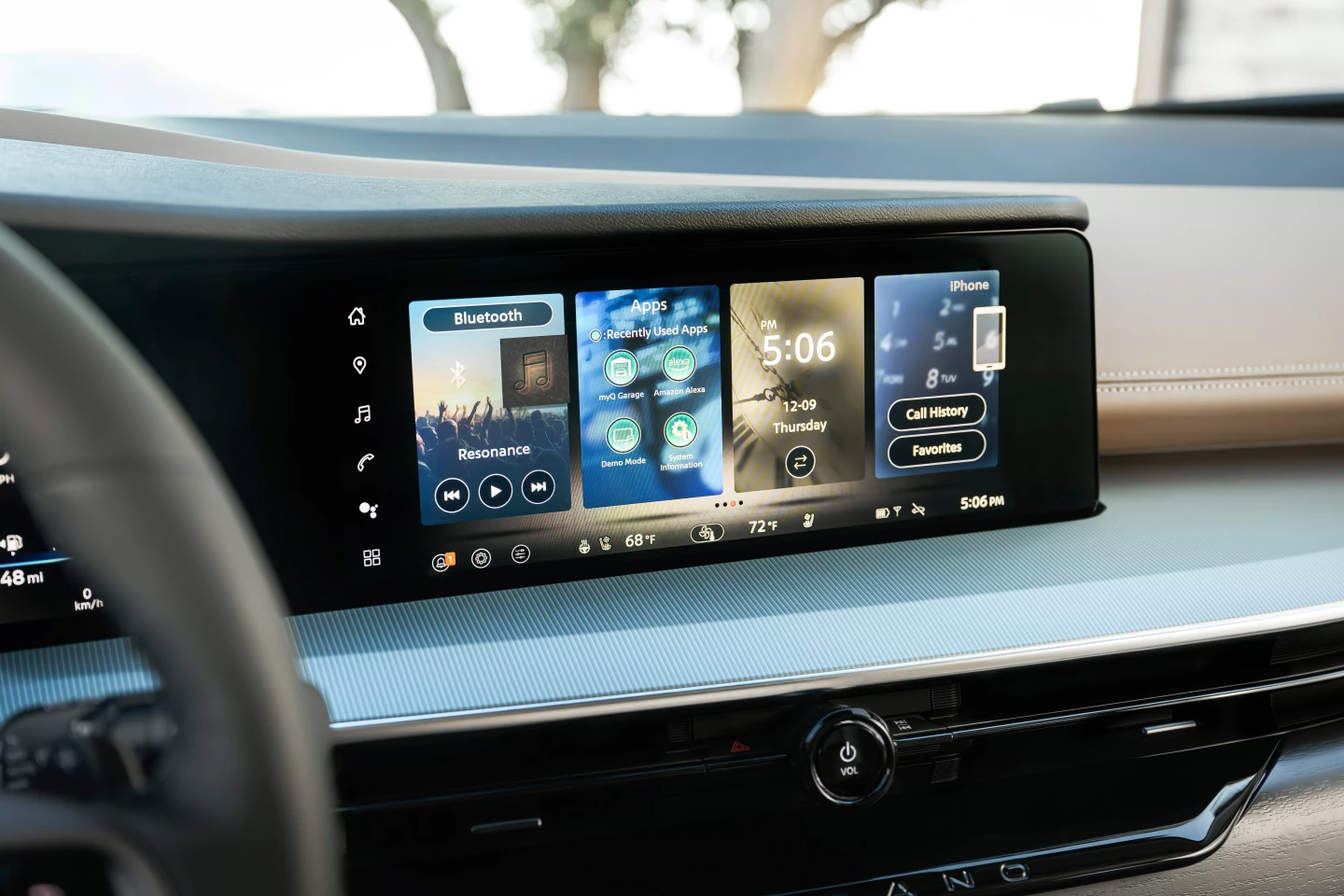The 2025 Nissan Murano brings in its fourth generation with a familiar twist: no more V6. That’s replaced with, you guessed it, a turbo-four. The better changes for the Murano come to both its inside and exterior.
At a glance
- Turbo-4 is good replacement for V6
- Design changes are evolutionary instead of revolutionary
- Good ride comfort
- Remains appealing to its core audience
The under-hood change for the 2025 Murano is the swap from a smooth, predictable six-cylinder to a turbocharged 2.0-liter VC-Turbo inline-our. This goes to a nine-speed automatic (another upgrade) and delivers a respectable 241 horsepower (177 kW) and 260 lb ft (352.5 Nm) of torque. That’s a little less than the V6 in HP, but a little more in torque. It comes with the expected turbo lag, of course, but it’s not a big change from the decidedly non-sporty outgoing model. Fuel efficiency hovers in the 23 mpg (12.3 l/100km) combined area. My “same for every car” highway MPG test returned 27.5 (10.3 l/100km), slightly above the Murano’s EPA rating.
The exterior of the Murano keeps the edgy looks of the previous generations, holding onto what this SUV is known for, but updates them to a more current and contemporary feel. It’s a fairly love-it-or-hate-it design that onlookers will probably mostly love. Most of the people commenting on its looks when I was driving it were generally approving of the design. Including my wife, a former Murano owner (mid-2000s model).

Where Nissan makes its most approvable upgrades is inside the 2025 Murano. Dual 12.3-inch displays dominate the dash, wrapping the driver and center stack in digitalidity ... digiality ... er ... screeny goodness. Wireless Apple CarPlay and Android Auto, as well as Google-built infotainment now take front stage. The cabin feels sleeker, thanks in part to ambient lighting, massaging “Zero Gravity” seats, and capacitive climate controls that vanish when not in use. Those controls take a minute to get used to, but make a lot of sense once they’re used. Most of us set-and-forget climate and when we do want to change it, we don’t want to button-push through a bunch of screens to find it. Here it just pops up when your finger is close to where those climate controls are located.
On the road, the Murano sidesteps the insipid CVT vibe of the past. The new nine-speed transmission offers brisk, usually seamless shifts; though at times the acceleration can feel a bit segmented. There’s a noticeable engine note. It’s far from aggressive, but a bit more engaging than the previous drone.
Ride comfort remains a mainstay for the Murano. It glides quietly, its steering light and predictable, but is more along the lines of a refined commuter than corner-carving enthusiast.
Practicality is still a high point for the Murano as well. The new design’s wider body yields more interior room, while cargo capacity remains solid at 32.9 cu ft (932 liters) behind the second row and 63.5 (1,798 liters) with them folded.

Pricing lands in expected territory: the base SV starts at about US$40,000 (FWD), with the top-tier Platinum AWD approaching $50,000. Not including destination charges.
Nissan’s fourth-gen Murano doesn’t reinvent the vehicle and it didn’t need to. The Murano, while not a best-seller, has long been a steady mover for the automaker. Its popularity lies in its right-sized design and decidedly feminine appeal. The shift to a traditional automatic is a welcome retreat from old frustrations, the turbo’d engine is a step towards efficiency, and the cabin pivots firmly into the modern era. Comfortable, composed, and well spec'ed, the Murano remains a compelling mid-size crossover.
Product page: 2025 Nissan Murano











